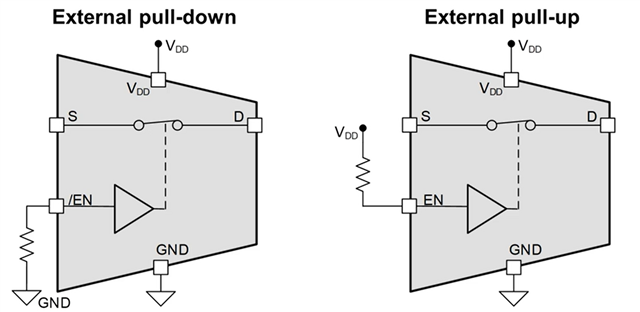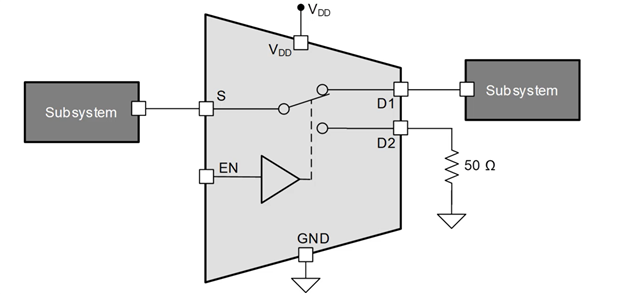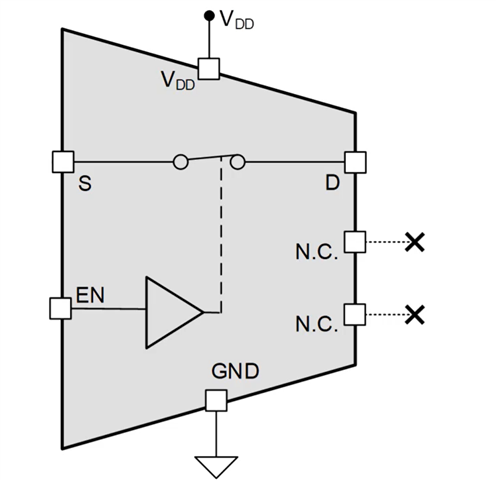It is not always necessary to use every pin that may be present on a TI signal switch or multiplexer, but what to do with the unused pins can often cause some confusion. In this FAQ, we will explore all the possible scenarios for each type of pin and whether or not it can be left floating or unused and how to handle such situations.
Logic Inputs:
Logic inputs (EN, SEL, or Ax) should never be left floating or unused. If they are left in such a state, they are considered to be in an indeterminate state and can cause the device to act unpredictably (may switch to an undesired state from noise introduced from the system). It is recommended that if you do not need to switch the logic pin state, they should be tied to either a pull-up or pull-down to ensure the logic state is always defined.

In some devices, however, the device will have an internal pull-up or pull-down resistor integrated which will alleviate the need for any external components or floating logic inputs. Please refer to each datasheet to determine whether or not your device incorporates this feature.
Source/Drain (S/D) & Input/Output (I/O) Pins:
When there is not a need for all the channels of a signal switch or multiplexer to be utilized, there are several options you can take with these pins. In lower frequency applications, these pins may be left floating as there is no impact on the other channels or operation if left in a floating state. For higher frequency applications, it is advised to tie these unused inputs to GND through a termination resistor (normally a 50ohm resistor). This is due to the possibility of noise coupling to the unused inputs and introducing crosstalk into the multiplexer which can cause fluctuations on other inputs and outputs on the device itself.

No Connect (N.C.) Pins:
No Connect Pins are exactly as they are described as they have no internal electrical connection to the device itself and will have no impact if the pin is left floating or connected to some other voltage. For some drop-in replacement devices, the N.C. pin may line up with a supply pin or other such pin, but there will be no impact to the application if there is a voltage applied to this pin as there is no connection or functionality that will be impacted by this. For more information on this, there is another FAQ written on this particular topic.

VSS Pin:
While some devices support dual rail applications, that does not mean they cannot be used in a single supply configuration as well. If the device you have chosen has a VSS pin or similar (such as VEE on some legacy devices) and do not need it, these need to be tied to GND if they are unused in an application. If they are not, there can be repercussions of noise being injected into the supplies that can cause some unexpected behavior internally in the device itself.

Thermal Pads:
With devices that incorporate thermal pads, these can be handled in a few different ways. These can be connected to either GND or VSS depending on the 0V reference nomenclature on the device (some multiplexers reference “VSS” as its 0V reference and some use the traditional “GND”). Otherwise, it may also be left electrically floating if need be.


